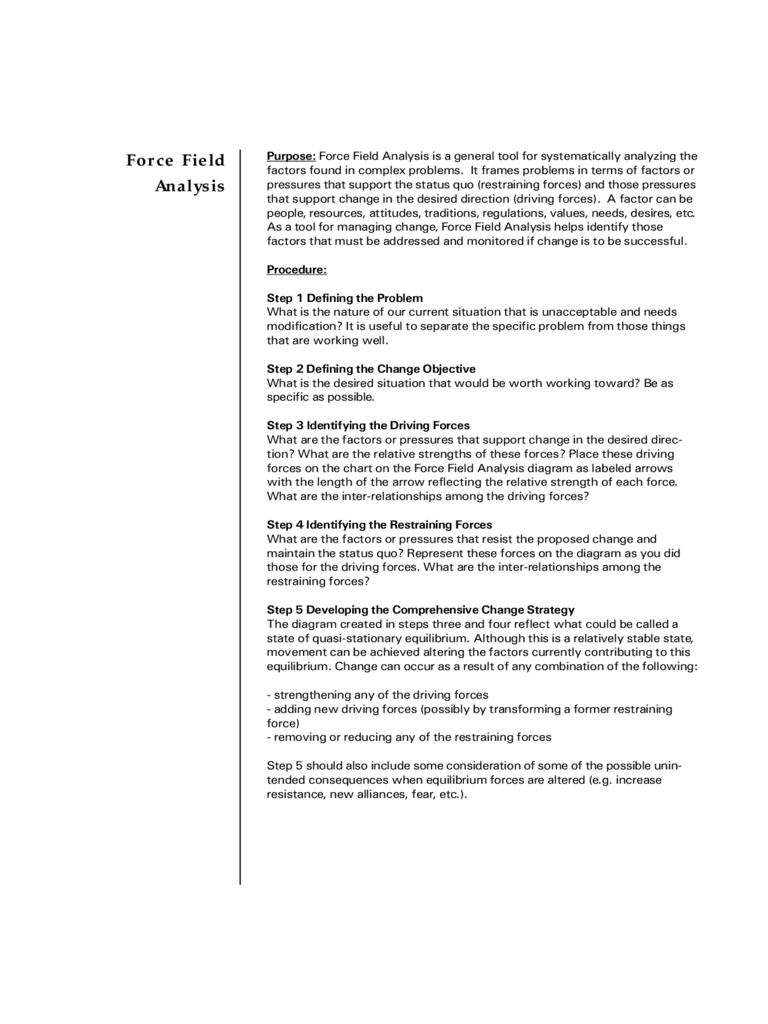Fillable Printable Force Field Analysis
Fillable Printable Force Field Analysis

Force Field Analysis

Purpose: Force Field Analysis is a general tool for systematically analyzing the
factors found in complex problems. It frames problems in terms of factors or
pressures that support the status quo (restraining forces) and those pressures
that support change in the desired direction (driving forces). A factor can be
people, resources, attitudes, traditions, regulations, values, needs, desires, etc.
As a tool for managing change, Force Field Analysis helps identify those
factors that must be addressed and monitored if change is to be successful.
Procedure:
Step 1 Defining the Problem
What is the nature of our current situation that is unacceptable and needs
modification? It is useful to separate the specific problem from those things
that are working well.
Step 2 Defining the Change Objective
What is the desired situation that would be worth working toward? Be as
specific as possible.
Step 3 Identifying the Driving Forces
What are the factors or pressures that support change in the desired direc-
tion? What are the relative strengths of these forces? Place these driving
forces on the chart on the Force Field Analysis diagram as labeled arrows
with the length of the arrow reflecting the relative strength of each force.
What are the inter-relationships among the driving forces?
Step 4 Identifying the Restraining Forces
What are the factors or pressures that resist the proposed change and
maintain the status quo? Represent these forces on the diagram as you did
those for the driving forces. What are the inter-relationships among the
restraining forces?
Step 5 Developing the Comprehensive Change Strategy
The diagram created in steps three and four reflect what could be called a
state of quasi-stationary equilibrium. Although this is a relatively stable state,
movement can be achieved altering the factors currently contributing to this
equilibrium. Change can occur as a result of any combination of the following:
- strengthening any of the driving forces
- adding new driving forces (possibly by transforming a former restraining
force)
- removing or reducing any of the restraining forces
Step 5 should also include some consideration of some of the possible unin-
tended consequences when equilibrium forces are altered (e.g. increase
resistance, new alliances, fear, etc.).
Force Field
Analysis

STATUS QUO
LINE
Driving Forces
Restraining Forces
GAP ANALYSIS
The Way Things Are Steps to Get There The Way I Want Them
><



